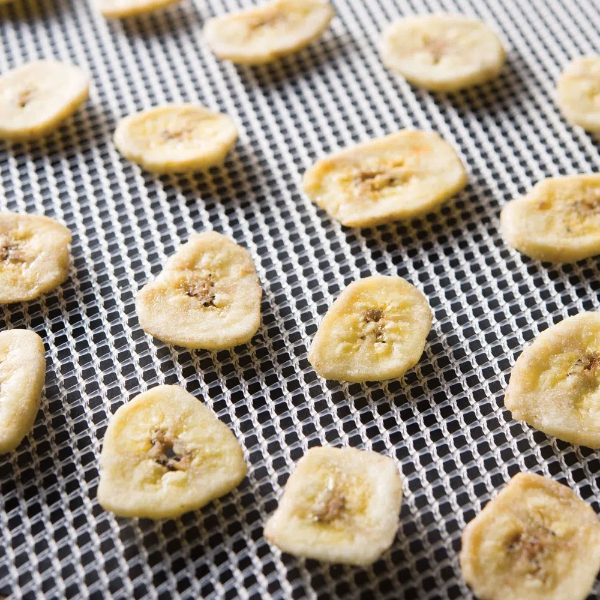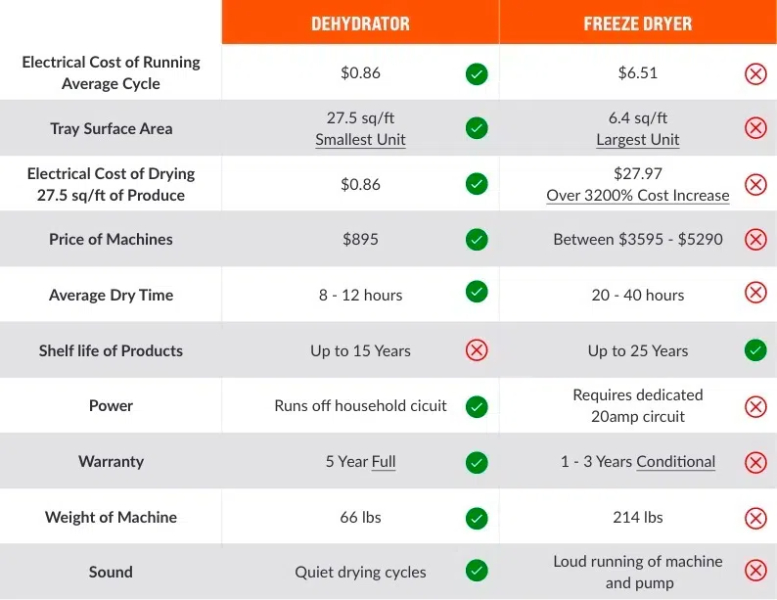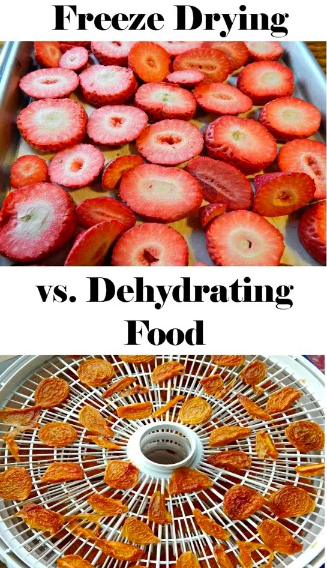
Content Menu
● Understanding Food Dehydrators
>> Benefits of Using a Food Dehydrator
● Understanding Freeze Dryers
>> Benefits of Using a Freeze Dryer
● Comparing Food Dehydrators and Freeze Dryers
● Choosing Between a Dehydrator and a Freeze Dryer
● How to Use a Food Dehydrator
● How to Use a Freeze Dryer
● Common Uses for Dehydrated Foods
● Common Uses for Freeze-Dried Foods
● Conclusion
● FAQs
>> 1. What is the main difference between a dehydrator and a freeze dryer?
>> 2. Can I use a dehydrator instead of a freeze dryer?
>> 3. How long do freeze-dried foods last compared to dehydrated foods?
>> 4. Which method retains more nutrients?
>> 5. Are there any foods that cannot be freeze-dried?
● Citations:
When it comes to preserving food, two popular methods often come up: food dehydrators and freeze dryers. Although both serve the purpose of removing moisture from food to extend its shelf life, they employ different processes and yield different results. This article will delve into the intricacies of each method, compare their benefits and drawbacks, and help you understand whether a food dehydrator or a freeze dryer is the right choice for your needs.

Understanding Food Dehydrators
A food dehydrator is an appliance designed to remove moisture from food using controlled heat and airflow. The process involves several key components:
- Heating Element: Generates hot air, typically between 85°F to 160°F (29°C to 71°C), depending on the type of food being dried.
- Fan: Circulates the hot air evenly across the food trays, ensuring consistent drying.
- Trays: Where the food is placed; they often have slits to allow for better airflow.
The dehydrator works by evaporating moisture from the surface of the food, which can take anywhere from a few hours to over a day, depending on the food type and thickness. Common foods dried in dehydrators include fruits, vegetables, herbs, and meats.
Benefits of Using a Food Dehydrator
- Cost-Effective: Dehydrators are generally less expensive than freeze dryers, making them accessible for home use.
- Simplicity: They are easy to operate with straightforward settings for temperature and time.
- Versatility: Ideal for making snacks like jerky, fruit leathers, and dried herbs.
- Nutrient Preservation: While some nutrients may be lost due to heat exposure, many vitamins and minerals remain intact.
Understanding Freeze Dryers
A freeze dryer, on the other hand, uses a more complex process known as lyophilization. This involves:
1. Freezing: The food is initially frozen at very low temperatures (often around -40°F or -40°C).
2. Vacuum Creation: A vacuum is applied to lower the pressure around the food.
3. Sublimation: The ice in the frozen food transitions directly into vapor without passing through a liquid phase. This process removes up to 99% of moisture.
Freeze-dried foods retain their original shape, color, flavor, and nutritional content much better than dehydrated foods. They can last for decades when stored properly.
Benefits of Using a Freeze Dryer
- Nutrient Retention: Freeze drying preserves about 97% of nutrients compared to 60-75% in dehydrated foods.
- Long Shelf Life: Freeze-dried foods can last 15 to 25 years or more when stored in airtight containers.
- Quick Rehydration: Foods rehydrate quickly due to their low moisture content.
Comparing Food Dehydrators and Freeze Dryers
To better understand the differences between these two methods, consider the following comparison:
| Feature | Food Dehydrator | Freeze Dryer |
| Moisture Removal | 85%-95% | Up to 99% |
| Shelf Life | Months to 1 year | 15-25 years |
| Nutrient Preservation | Moderate (some loss) | High (97% retention) |
| Cost | Generally lower | Higher initial investment |
| Complexity | Simple operation | More complex setup |
| Best For | Snacks like jerky, fruit leathers | Long-term storage of various foods |
Choosing Between a Dehydrator and a Freeze Dryer
When deciding which appliance is best for you, consider your specific needs:
- If you're looking for an affordable option primarily for making snacks or preserving seasonal fruits and vegetables for short-term use, a food dehydrator is likely sufficient.
- If your goal is long-term storage with maximum nutrient retention—especially for emergency preparedness or bulk storage—a freeze dryer would be more appropriate despite its higher cost and complexity.

How to Use a Food Dehydrator
Using a food dehydrator is relatively straightforward. Here's a step-by-step guide:
1. Preparation: Wash and cut your fruits or vegetables into uniform sizes for even drying. For meats, ensure they are sliced thinly against the grain.
2. Pre-Treatment (Optional): Some fruits benefit from pre-treatment with lemon juice or ascorbic acid to prevent browning and enhance flavor.
3. Load the Dehydrator: Arrange the prepared food on the trays without overcrowding them. Leave space between pieces for air circulation.
4. Set Temperature & Time: Depending on what you are drying, set the appropriate temperature (usually between 125°F - 145°F) and time (ranging from 4 hours to over 24 hours).
5. Check Progress: Periodically check on your food as it dries. You may need to rotate trays if your dehydrator doesn't have an automatic fan feature.
6. Storage: Once dried, allow the food to cool before storing it in airtight containers or vacuum-sealed bags to maintain freshness.
How to Use a Freeze Dryer
Using a freeze dryer involves more steps but yields superior results:
1. Preparation: Similar to dehydrators, wash and cut your food into uniform pieces.
2. Loading Trays: Place the prepared food onto trays designed specifically for freeze drying. Avoid overcrowding for optimal results.
3. Freezing Process: Insert trays into the freeze dryer and initiate the freezing cycle. The machine will automatically lower temperatures as needed.
4. Vacuum Cycle: Once frozen solid, the machine will create a vacuum environment which allows sublimation to occur effectively.
5. Drying Cycle: The freeze dryer will run through its programmed cycles until all moisture has been removed from the food.
6. Storage: Once complete, store freeze-dried foods in vacuum-sealed bags or Mylar pouches with oxygen absorbers for maximum longevity.
Common Uses for Dehydrated Foods
Dehydrated foods have numerous applications:
- Snacks: Dried fruits like apples, bananas, and apricots make healthy snacks.
- Cooking Ingredients: Dried herbs can enhance flavors in cooking; vegetables can be rehydrated in soups or stews.
- Camping & Hiking Meals: Lightweight dried meals are perfect for outdoor adventures due to their portability.
- Emergency Preparedness: Stocking up on dehydrated foods ensures you have nutritious options during emergencies or natural disasters.
Common Uses for Freeze-Dried Foods
Freeze-dried foods are often utilized in various scenarios:
- Long-Term Storage: Perfect for those looking at preparedness strategies or bulk storage.
- Space Missions & Military Rations: Due to their lightweight nature and long shelf life.
- Backpacking Meals: Convenient meals that require only hot water for rehydration.
- Emergency Kits: Ideal for including in disaster preparedness kits due to their extended shelf life and nutritional value.
Conclusion
In summary, while both food dehydrators and freeze dryers serve the essential function of preserving food by removing moisture, they do so through different processes that result in varied outcomes. A dehydrator is ideal for everyday use where budget and simplicity are priorities. In contrast, a freeze dryer excels in nutrient retention and longevity of stored foods but requires a greater investment of time and money.
Ultimately, your choice should align with your preservation goals—whether you prioritize convenience or long-term storage quality.

FAQs
1. What is the main difference between a dehydrator and a freeze dryer?
The primary difference lies in their processes; dehydrators use heat to remove moisture while freeze dryers use freezing and sublimation under vacuum conditions.
2. Can I use a dehydrator instead of a freeze dryer?
While both appliances remove moisture from food, they do so differently. A dehydrator cannot replicate the preservation quality achieved by freeze drying.
3. How long do freeze-dried foods last compared to dehydrated foods?
Freeze-dried foods can last up to 25 years or more, while dehydrated foods typically last several months to one year depending on storage conditions.
4. Which method retains more nutrients?
Freeze drying retains about 97% of nutrients compared to approximately 60-75% retained in dehydrated foods due to heat exposure during dehydration.
5. Are there any foods that cannot be freeze-dried?
Yes, some foods with high-fat content like avocados or certain cheeses do not freeze-dry well due to their oil content which can become rancid over time.
Citations:
[1] https://sedpharma.com/news-events/freeze-dryer-vs-dehydrator/
[2] https://www.lowes.com/n/buying-guide/freeze-dryer-vs-dehydrator
[3] https://septree.com/pages/what-is-the-working-principle-of-food-dryer
[4] https://www.dreamstime.com/photos-images/food-dehydrator.html
[5] https://www.youtube.com/watch?v=mtDzdYoyeR8
[6] https://www.youtube.com/watch?v=TxGEMG-DCnY
[7] https://harvestright.com/freeze-drying-vs-dehydrating/
[8] https://greenthumbdepot.com/blogs/guides/freeze-dryer-vs-dehydrator
[9] https://www.freepik.com/free-photos-vectors/food-dehydrator
[10] https://www.youtube.com/watch?v=lEUA2t2XD5M
[11] https://www.goodhousekeeping.com/appliances/a31904157/what-is-a-dehydrator/
[12] https://www.trimleaf.com/blogs/articles/dehydrator-vs-freeze-dryer
[13] https://en.wikipedia.org/wiki/Food_dehydrator
[14] https://homesteadingfamily.com/freeze-dried-vs-dehydrated-foods/
[15] https://cosori.com/blogs/blog/how-does-a-food-dehydrator-work
[16] https://mobileimages.lowes.com/marketingimages/4a3eb1d9-90b9-47f4-99dd-0f75d5ac639a/freeze-dryer-or-a-food-dehydrator-hero.png?sa=X&ved=2ahUKEwi68dLCzeeKAxX0KFkFHaljAnwQ_B16BAgKEAI
[17] https://www.webstaurantstore.com/guide/741/food-dehydrators-buying-guide.html
[18] https://www.instagram.com/whitepepperfarmshomestead/reel/DEiQcORSUbT/
[19] https://www.youtube.com/watch?v=Zl4wTcCPJu0
[20] https://www.mitchellcooper.co.uk/media/wysiwyg/excalibur-dehydrator.webp?sa=X&ved=2ahUKEwj4_NPCzeeKAxWpmYQIHesTMWwQ_B16BAgIEAI
[21] https://www.youtube.com/watch?v=rR2G5UO-5Ms
[22] https://www.youtube.com/watch?v=wcLUDAJkcEY
[23] https://www.istockphoto.com/de/bot-wall?returnUrl=%2Fde%2Fphotos%2Ffood-dehydrator
[24] https://www.haiermedical.com/freeze-dryer/Freeze-Dryer.html
[25] https://stock.adobe.com/search?k=dehydrator
[26] https://www.youtube.com/watch?v=m1K2mbk8WZo
[27] https://harvestright.com/videos/
[28] https://www.pinterest.com/smallkitchenap2/dehydrators/
[29] https://www.youtube.com/watch?v=9DSGcVhjHEc
[30] https://www.youtube.com/watch?v=4p42R2WdOXA
[31] https://www.youtube.com/watch?v=LK8FwPqFu2I
[32] https://www.youtube.com/playlist?list=PL71uE0jHe7onrQE-Q4rCTbbDOkRVl7cQu
[33] https://www.commercialdehydrators.co.uk/post/freeze-drying-vs-dehydration
[34] https://pocketchangegourmet.com/how-does-a-dehydrator-work/
[35] https://www.youtube.com/watch?v=iIuV3EkRFtU
[36] https://www.istockphoto.com/de/bot-wall?returnUrl=%2Fde%2Fphotos%2Fdehydrator











